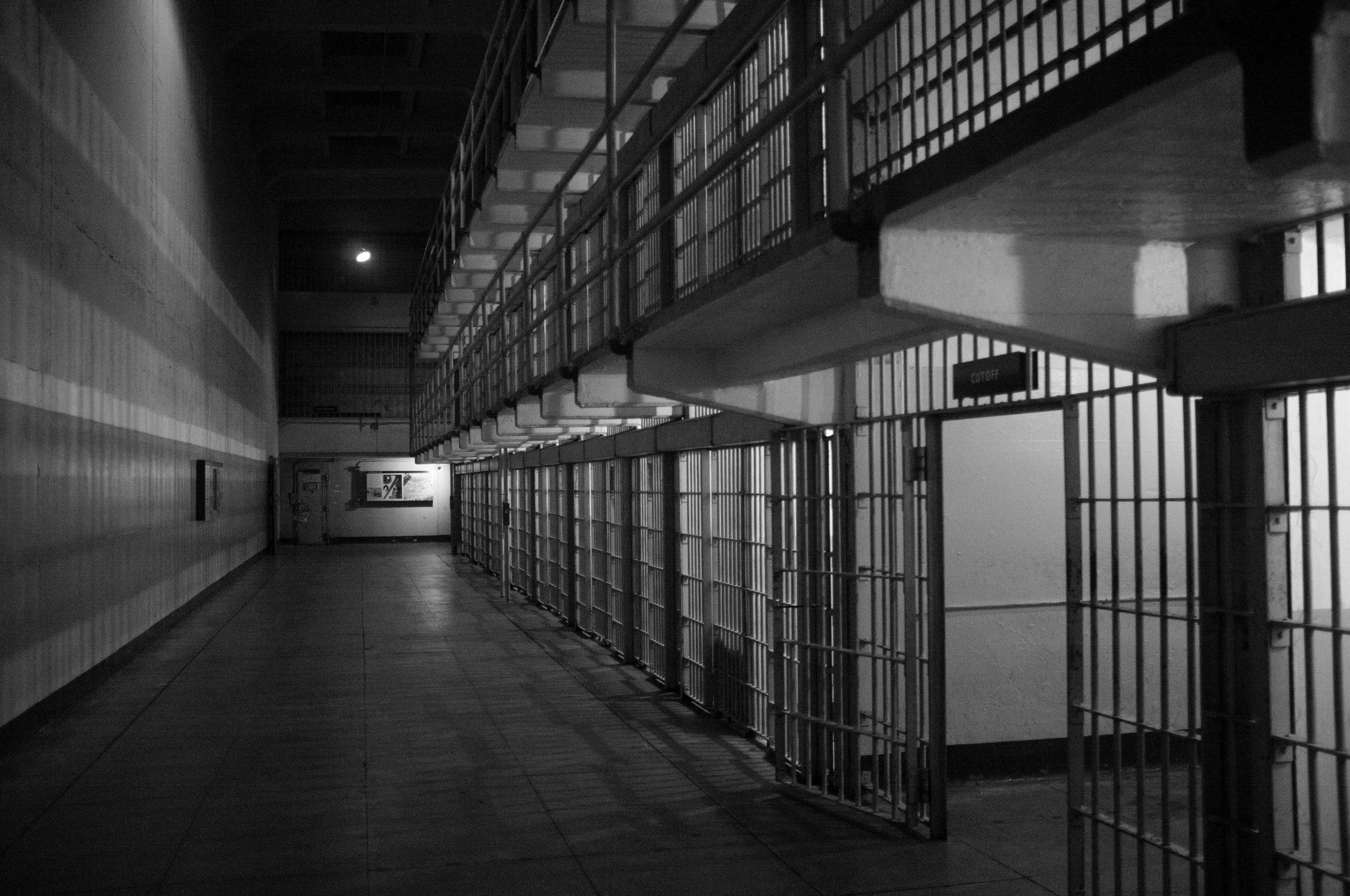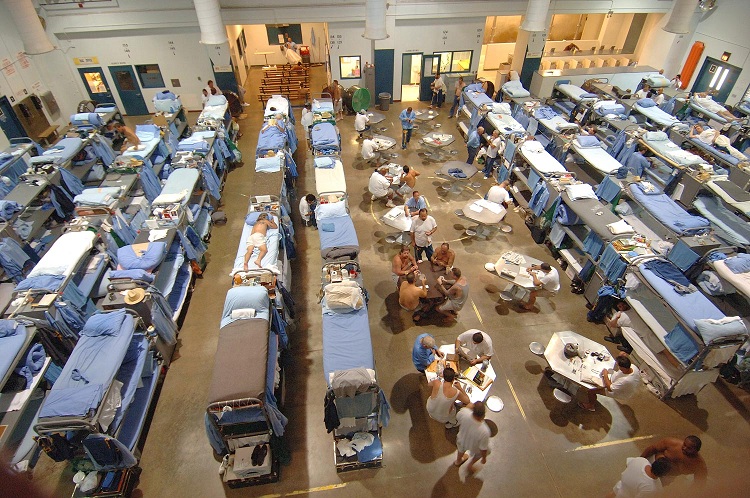
19 Jul Lock ‘Em Up, Throw Away The Key And … Now What?
On St. Patrick’s Day this year, I found a new addition to my Irish music collection. It’s a song by balladeer Seamus Moore entitled the Castlerea Prison Song. Moorer extols the virtues of a new prison at Castlerea in western Ireland. “[W]ith video games and satellite TV … [and] a modern gym for the overweight criminal who wants to keep trim,” this prison is supposedly like a luxury hotel. Of course, with the whimsy that makes these ballads so great, comes the refrain: “Lock ‘em, throw away the key. You’re sentenced to life in Old Castlerea.”
I honestly don’t know which side of “the pond” that trope came from. But the idea to lock ’em up and throw away the key is as American as the proverbial apple pie. Shortly after my own story broke, I received a message on my answering machine inviting me “to rot in prison,” another good, old-fashion idiom. (The courageous caller did not leave his name, but to this day I’m quite sure I know who it was.) Trite sayings get to be such by having a grain of truth. These tropes are virtual slogans of American mass incarceration. The premise is that we permanently remove the “offenders” from the society, thus protecting it and relieving it from having to think any further about them. Alas, as with all societal questions, it’s not that easy.
The “lock ’em up” process is pretty much already complete.
As of 2020, the combined state and federal prison systems in the U.S. were at over 102 % of capacity. This country incarcerates some 2.12 million people. The People’s Republic of China has a population four times that of ours. But, according to the latest figures, locks up only 400,000 or so more people. Hence, the “home of the free” locks up many more people on a per capita basis than Communist China. My old home State of New Hampshire, whose motto is “Live Free or Die,” has an incarceration rate greater than only a handful of European countries and all but one other state of territory in the United States (Utah beat us by eight).
The “lock ’em up” crowd will have a predictable response: So what? After all, 102% isn’t so bad and just shows that we are putting “the bad guys” away. Plus, it could be worse. Haiti is at 454% of its capacity. However, policymakers must consider some other figures. In recent years, the various levels of government spent an average of $30,000 per person on incarceration. (This figure includes the billions that the federal government pays to the states to subsidize their prisons systems).
According to a 2021 Census Bureau report, these same governmental units spent an average of $13,187 per student on educating pre-K through secondary schools. As much as the American public may want people locked up, it is hard to argue that incarceration is over twice as valuable as education.
Is the answer to overcrowding building more prisons? Connecticut estimates the cost of expanding any of its prisons at over $50,000.00 per bunk. Utah, the state that beats New Hampshire in the “lock ’em up” stakes, just opened a new 3,600 bed facility for over $1 billion. That is a lot of schoolbooks.
How many do you need in a crowd to call it overcrowding?
Lengthy sentences are just one of the causes for prison incarceration. In fact, some of the worst examples of overcrowding are in lower security and pretrial detention facilities. These persons could be in halfway houses or monitored on electronic bracelets. Officials use valuable cell space for paroled persons who have returned for minor technical violations, such as failure to report an address change or being late to a report meeting. Other prisoners face delays getting parole because they cannot complete required programming (counseling) due to a lack of space in their programs.
Poor healthcare due to overstretched resources leads to the spread of disease in facilities. If incarcerated people become sick, the prison staff soon follow. A stellar example of this came in the summer of 2020, when an outbreak of COVID-19 at USP Lewisburg spread beyond the walls and caused Union County to have the highest rate of infection in the Commonwealth of Pennsylvania.

Overcrowding people in the name of “lock ’em up” has impacted housing.
Because of the aforesaid costs of prison construction, officials house very few American prisoners in single-cell units. By far, most stay in “dormitory cells,” a cell housing more than one individual. There are many different cell capacities. Each person should have something called four “squares” of space. Typical cell blocks or pods have at least two tiers of cells centered around a “common area” used for recreation (gym, TV, telephone and the like). The tiers are made up of rooms and shared shower and toilet areas. The sleeping rooms (cells) contain a number of bunks determined by the administration’s need for prisoner housing.
From my knowledge of prison accommodations “four square” is a game that elementary school kids play at recess and has nothing to do with capacity. Officials may place a person in a six-person cell, but they could choose one with eight or more as well. Cell capacity in likely limited more by how many persons a given CO can observe and count quickly than anything else.
One result of overcrowding is the greater risk of drug trading, violence and gang activity. Hundreds of people with differing levels of psychopathy and sociopathy, divided into rooms of eight or more individuals a piece, create a dysfunctional “microsociety.” Supervision is of limited effect in this arrangement. No warden, captain or officer will ever admit this, but prison discipline owes a lot to the will of the incarcerated.
Overcrowding transforms gyms into dorms for dozens of prisoners.
I experienced the exemplar of overcrowding in mass incarceration when officials sent me to “the Gym” in the Northern NH Correctional Facility. It had literally been one of the facility’s two gymnasiums and still had basketball hoops on either end of the room. There were 58 bunks when I arrived, though I was told there had been more. Staff lined them up in six rows with those against the walls being double-deckers. We had two large screen TVs, which one tuned into using your shortwave radio.
If you think this is where officials sent prisoners to “rot,” that would be wrong. Everyone in the gym who was physically able had a job or was going to programs or classes. There was small area near the back with microwave oven and table where individuals could “batch” meals from ingredients purchased at the commissary. Officials observed the entire expanse of the gym through surveillance cameras.
The COs largely stayed in their “bubble,” a secure room, from which they would mechanically operate the locking doors. The keys have been thrown away in most prisons long ago, replaced with remote locking devices which make a distinctive “buzz” when operated. In fact, staff usually left the main door to the hallway by the Gym unlocked.
If you’re not in a gym, you might be “outside the wall.”
The Gym was one of the two male C2 (minimum) classification facilities in the New Hampshire system. For those incarcerated there, the next “stop” was either the other C2 unit in Concord or the halfway house in Manchester, both of which were “outside the wall”. Another, better alternative, was the bracelet program. In that program, incarcerated people who had a sponsor to pay the cost could move into “community corrections” with an electronic ankle monitor.
There was an overwhelming feeling amongst those held in the Gym not to cause any trouble. For this reason, one CO could easily handle fifty or more people. Privacy was minimal but efficiency was the standard.
I reached the Manchester halfway house just as the pandemic hit America. Suddenly the counselors at the house were literally recruiting for the bracelet program. In typical New Hampshire fashion, the person under consideration had to have that sponsor who was willing to pay and a roof over his head. As with incarceration all over the world, this technology proved a great help in the impossible task of easing a crowded environment where social distancing was impossible.
Look no further than Rikers Island if you want to see how bad things are.
In April 2022, no correctional institution in the United States has captured the problems of overcrowding and failures of mass incarceration more than the Rikers Island complex in New York City. An island in the East River, Rikers was originally about 90 acres in size. But it later expanded to about 400, largely with prison labor. It’s first facility opened in 1932. Jurisdictionally, Rikers is part of the Bronx. But it is only reachable by a bridge from Queens (and its postal address is East Elmhurst). Rikers is not a single unit but a complex of ten facilities. Roughly 85% of those housed there are in pretrial confinement, in other words detainees who could not afford bail. The others are in for short sentences or, until recently, parole violations.
The overcrowding issue at Rikers has gone on for years. The complex meant for 5,000 houses over 10,000 persons and sometimes swells to as many as 20,000. This has led to abhorrent conditions, with persons sleeping on the floor and defecating into bags. Rikers is regarded as one the worse facilities in the country. In fact, some people have even called it the largest penal colony on Earth.

In 2021, Rikers Island featured 16 deaths and tons of other violence.
The issues with Rikers came to a head in 2021. During that calendar year sixteen people died in custody on Rikers Island. One hanged himself while a group of local politicians were touring the complex. Since most of these individuals were pretrial, protestors claimed convincingly that a Rikers Island remand was a death knell for the unsentenced. The New York Times published an exposé, with videos, of gang-controlled units, in which the leaders introduced “fight nights” in which incarcerated people were forced to fight one another.
Violence in the complex is pervasive, but not just among prisoners. The number of “use of force” reports of clashes between officers and detainees totaled twelve incidents per every one hundred incarcerated persons. Perhaps the climax of this ongoing chaos came in September when a handcuffed prisoner hijacked a bus containing others, while the guards left them to get paperwork. After a short drive, he crashed it into the wall of one of the cell buildings.
The correctional officers’ union says that Rikers is understaffed. However, the official roster of officers is about 9,000, which, even when the place is over full, is a ratio as low as two guards for every incarcerated person. The current staff has proven reluctant to show up. During 2021 absenteeism at times rose as high as 21%. The cost of supervising Rikers into submission would be staggering. It currently costs the city over $500,000.00 per year incarcerated individual. For all the money spent it is still Bedlam in Gotham.
A plan to close Rikers Island sounds good but never materializes.
Early in his first term, former New York Mayor Bill DeBlasio announced a plan to close the Rikers complex. The city council voted to close it by the end of 2026. DeBlasio’s replacement plan was for four smaller, modern facilities in different city locations. Spreading out the population, the administration reasoned, would preserve the “inmate’s” family relationships and ease tension.
However, nobody apparently asked the people of the city. In New York, matters like this face review by community boards. They function as intermediaries between the neighborhoods and city government. Every single community board in areas where officials have proposed the new jails has vociferously opposed them. This public reaction should instruct all of those who believe the answer to overincarceration is more and “improved” incarceration. I will wager that when revelers gather at Times Square on New Year’s Eve 2026, pretrial detainees will still be housed on Rikers, especially with Mayor Eric Adams now in power. And, so, the “lock ’em up” mentality continues.
Is the “lock ’em up” mentality still the best one in the 21st century?
By the way, no one is sentenced to life in “Old Castlerea”. Ireland has adopted an approach that is used throughout the European Union. This approach emphasizes rehabilitation and remedial education over “rotting” in prison. Castlerea prison is a medium security institution where people learn a trade and go to school, then relax by working out or watching “satellite TV”.
Will America follow? Within the last month the Tennessee legislature passed legislation to require persons convicted of 14 types of felonies to serve their entire sentences without possibility of parole. The law passed despite testimony that this provision would disincentivize rehabilitation and cost the state between $28 and 90 million in added incarceration expenses. The governor has voiced skepticism about the proposal. At the same time, even before the pandemic, the use of electronic monitoring technology for pre-trial and post-conviction “community corrections” is growing steadily.
The mountain of evidence that mass incarceration is increasingly costly and not beneficial to public safety gets higher with every passing year. Lawmakers must decide if “lock ‘em up” retribution or community correction is the better model in the 21st century. One thing is for sure, there won’t be any Irish ditties written about Old Rikers Island.

